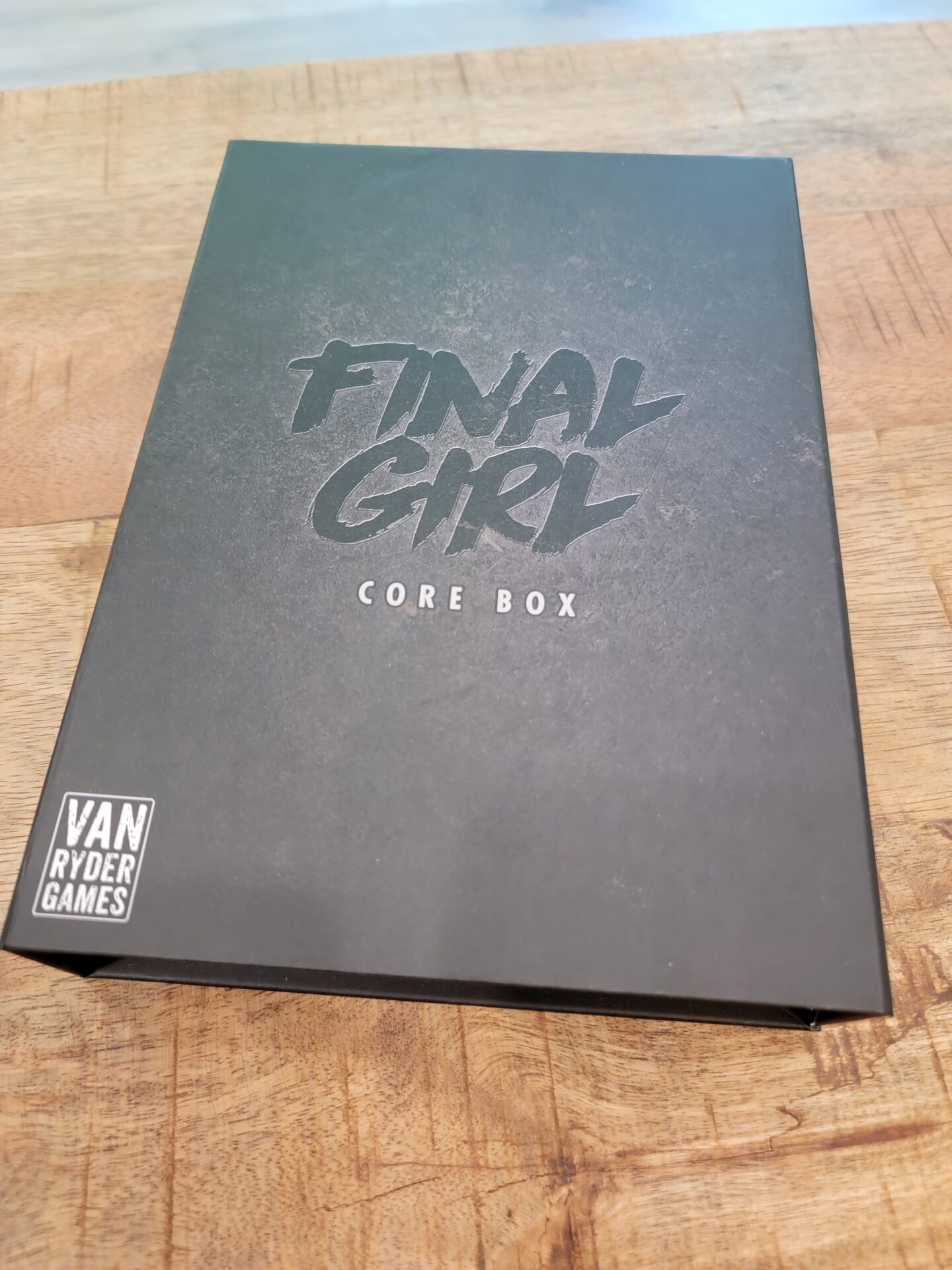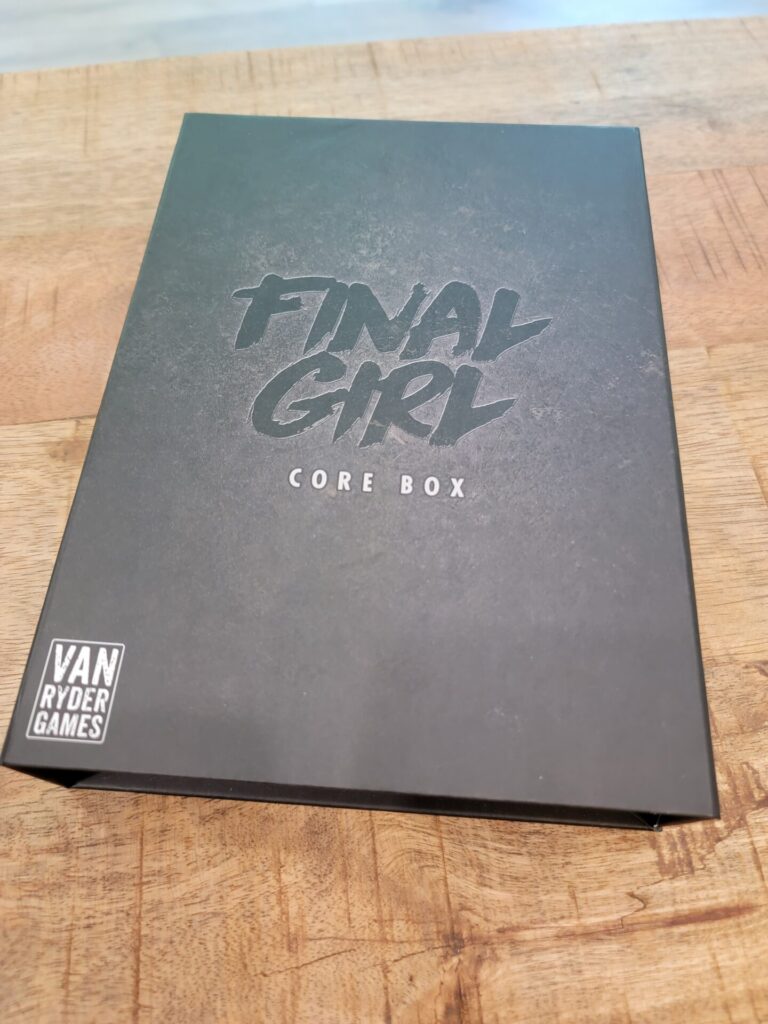
Final Girl is a game system created for solo board gamers, themed around classic and modern day horror movie tropes. In order to play, you must own the Core Box as well as at least one Feature Film. Each Feature Film comes with one Villain, one Location, and two Final Girl Cards that players can mix-and-match to add variety to future gaming sessions.
Since the Core Box is not playable on it’s own, this will not be a standard review, per se, but I wanted to give you a primer on what you’ll receive in the Core Box so you have a better understanding of how the gaming system works. Check out our website for details on a few of the individual Feature Films we’ve checked out, thus far.
What Comes in the Core Box?
The primary purpose of the Core Box is to give players the majority of tokens and cards that will apply to all Feature Films. While all of the components involved might not be used in every Future Film, the Core Box is a wonderful way to keep all of the universal pieces together in one place and not accidentally mix them together with the components found in the Feature Film boxes.
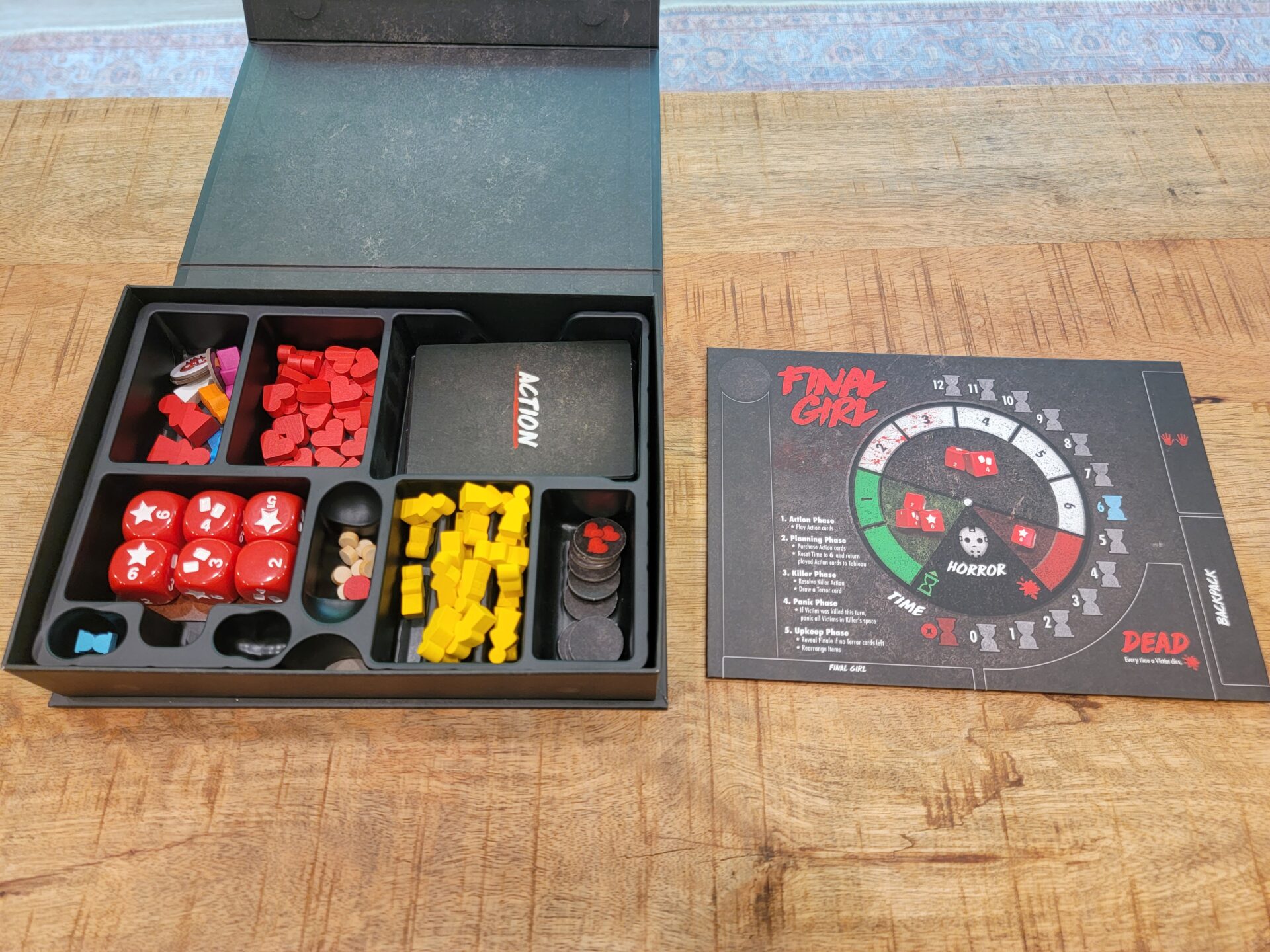
The first thing you’ll see in the Core Box is a lengthy Final Girl rulebook. This rulebook will explain all you need to know about the full gaming system, including how the Villains and Locations work, in a purely general way. The Feature Films will come with single page instructions on specifics for that edition but the rulebook in the Core Box will be your main source for game clarification.
The second thing you’ll notice in the Core Box is the Player Board. This board will be used to track all of the player specific metrics. The middle gauge will be used to track the Horror Level throughout the game. This is basically what will control how many dice the Final Girl will get to roll on every action turn. Around this gauge is a semi-circle of hourglass icons, representing Time in the game. Time will be a resource used to both power actions, and purchase more action turns during the Planning Phase.
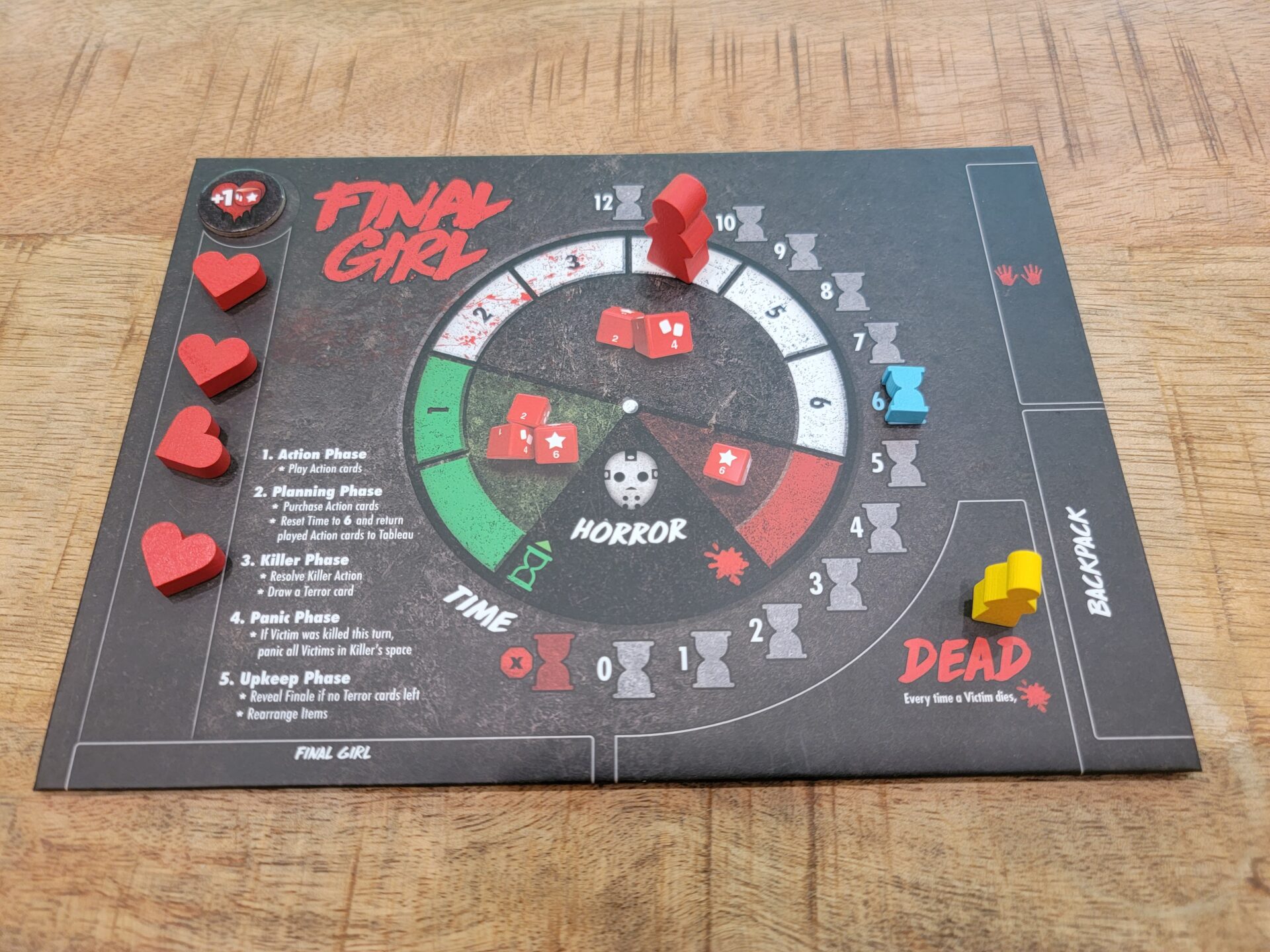
Around the edges of the board are sections to hold a varying amount of tokens or chits that will be collected throughout the game. The left is where the Final Girl’s Health Tokens will be stored, the bottom right is where dead Victims can be kept, and the right has spaces to place Item Cards that might be picked up in certain locations.
Next, the player will get six 6-sided, red Action Dice. While these dice are all printed with a value between one and six on each side, as most of us are familiar with, they do have one slight modification. Sides one and two are left blank, sides three and four are printed with a pair of card icons, and sides five and six are printed with a single star each. These different icons will work in tandem with the Action Cards to determine the level of success for each of the Final Girl’s activities. A blank is considered a failure while a star is considered a success. Sides three and four are called “partial successes” where the player can discard two Action Cards to convert it into a star, otherwise it is considered a failure.
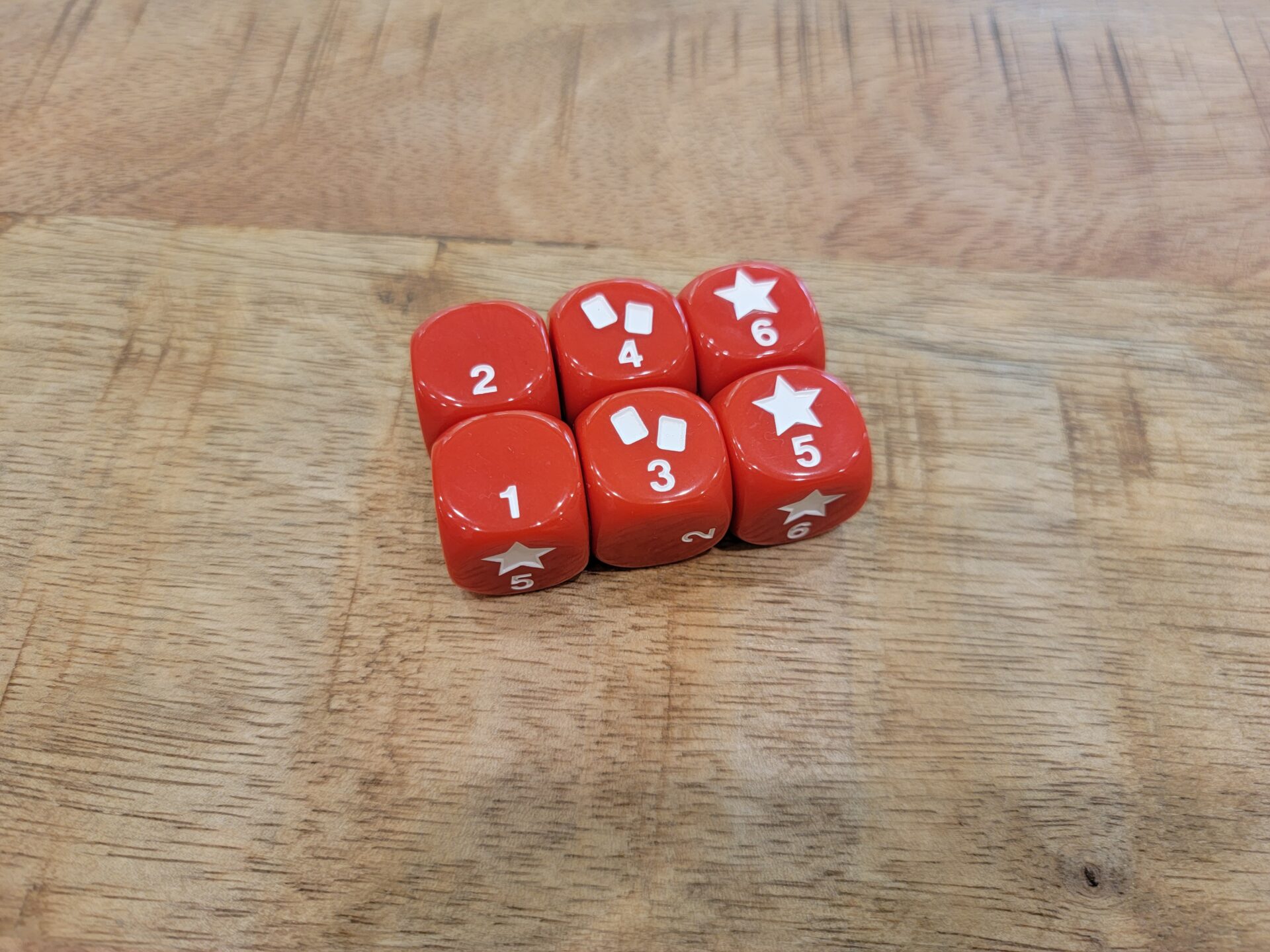
So, let’s look at those Action Cards that enable the Final Girl to fight back against the psycho murderer she will face in each episode. These Action Cards will typically have three lines printed on them, a Double Success Line, a Single Success Line, and a Failure Line as well as an amount of Time that must be spent to purchase the card. Each time an Action Card is played (in the Action Phase,) the dice are rolled, the failures and successes are counted up, and the player activates the specific line on the card that matches the dice results. As the aforementioned Horror Level decreases, players are given more dice to roll, thus increasing their chances for success but certain actions by the Villain will increase the Horror Level, stripping dice from the player.
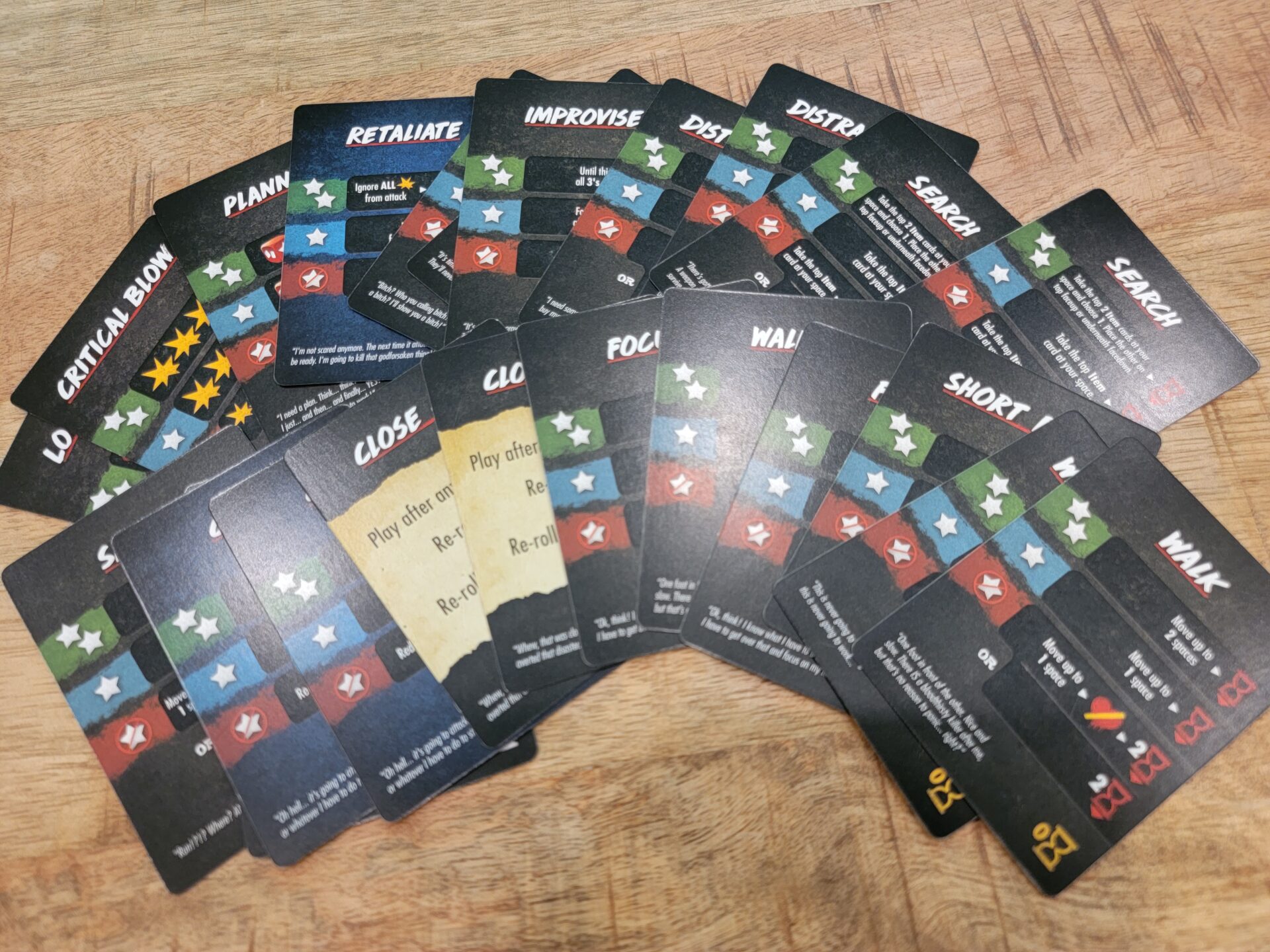
After the player has used all of the Action Cards they wish to, they move on to the Planning Phase, where they will spend whatever Time they have left (tracked on the Time Track) to purchase more Action Cards to be used in future rounds.
The rest of the box is filled with meeples representing Victims, the Villain, and a purple meeple for the Final Girl herself. There are also numerous Heart Tokens to help track health as well as random other chits and markers to be used as each Future Film sees fit.
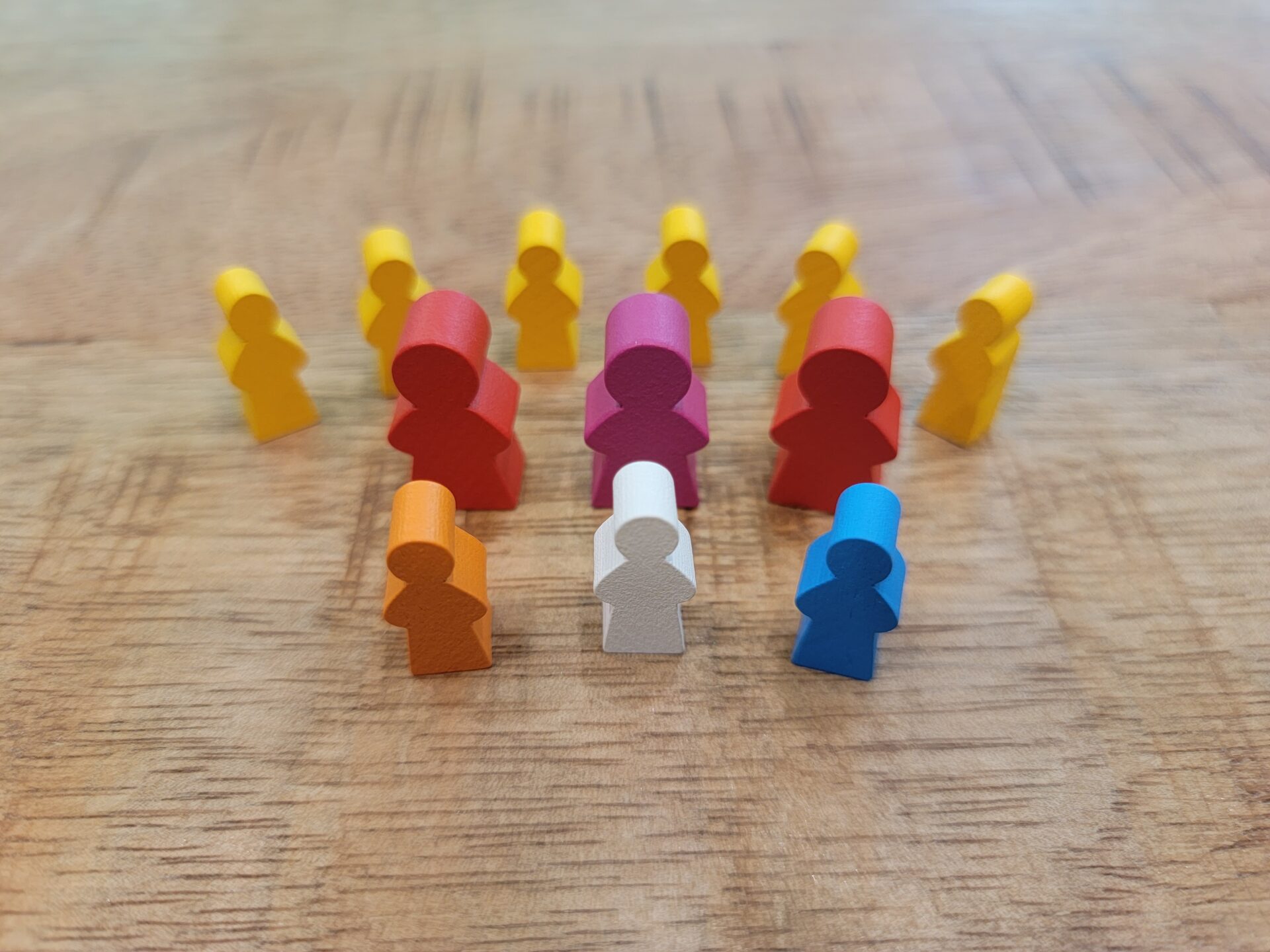
General Gameplay
Each round includes five phases. I’ve already touched slightly on two of these phases: the Action Phase and the Planning Phase. These two phases happen first and act as the player’s turn in the round. The third phase is the Killer Phase. This phase relies heavily on which Feature Film you’re using but in general, the player will resolve the Killer Action printed on the Villain Board and then draw one of the Feature Film Terror Cards and resolve the consequences printed there.
Next, an optional Panic Phase happens, where, if a Victim was killed this round, all Victims in the Villain’s space will “panic.” This is a mechanism that uses dice rolls to randomly move Victims away from the Killer but might run them into even dangerous locations, depending on the Feature Film being used.
Lastly, an Upkeep Phase takes place where players can re-arrange the items in their Backpack, to place different items into your hands to be used in the next round. This phase also acts as a place for the player to check if the Villain has ran out of Terror Cards. If so, the Villain’s Finale Card is revealed, typically boosting the Villain’s power and range to an extraordinary amount.
General Thoughts
There are a lot of things about the Final Girl Gaming System that I really enjoy. First, the mix-and-match aspect adds a ton of replay ability. Each Feature Film is only $20, so it’s not a thick barrier of entry to get a few over time. Players can start to use different Villains at different Locations, even using different Final Girls (each with their own unique special power) to create wholly different scenarios.
Secondly, as a solo gamer, playing a game that was designed specifically for one-player, has a lot of advantages over playing a multiplayer game with a solo mode tacked on. The whole game just clicks and runs smoother than a majority of other one-player versions of boardgames.
Lastly, the thematic touches throughout the game will bring a smile to any horror-fan’s faces. The flavor text is wonderful (though some of it is definitely not for children) and you’ll feel like you’re trapped in your favorite horror movie the whole time you’re playing. There is even a mechanism that enables the Villain (or yourself) to possibly rise from the dead to continue to fight!
Be warned though, this game is tough. The only way to win is for the Final Girl to attack the Villain enough to remove all of it’s Health Tokens. This is not an easy task as the Villain almost always as more Health than you and is quite a bit more powerful than you. On top of that, luck is a huge factor in both the dice rolls and the cards drawn. In some games, skill is just not enough and you’ll have to face a brutal death at the hands of a depraved killer.
So, if you’re a horror buff, a solo board gamer, and someone who isn’t turned off by a little luck driven gameplay, definitely pick up the Final Girl Core Box and one of the Feature Films to check it out… before it’s too late!
Links
As an Amazon Associate I earn from qualifying purchases.

